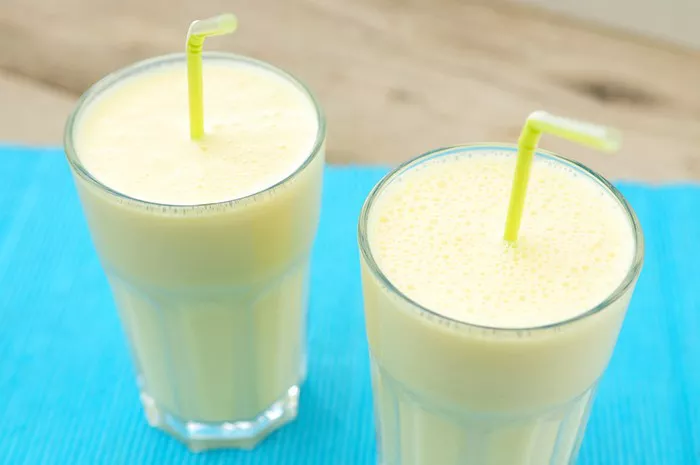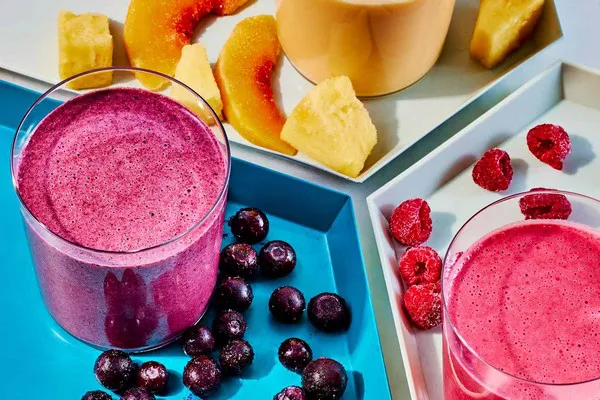Kale has gained popularity as a superfood over the past few years. Packed with vitamins, minerals, and antioxidants, it is a favorite ingredient in smoothies. However, many people wonder whether kale can be frozen and used later for smoothies. This article will explore the process of freezing kale, its benefits, and how to incorporate it into your smoothies.
What is Kale?
Kale is a leafy green vegetable that belongs to the cabbage family. It comes in several varieties, including curly kale, Lacinato kale (also known as dinosaur kale), and red kale. Kale is rich in vitamins A, C, and K, as well as calcium, iron, and antioxidants. Its nutrient density makes it an excellent addition to a healthy diet, particularly in smoothies.
Why Freeze Kale?
Freezing kale is a practical way to preserve its nutrients and extend its shelf life. Fresh kale can wilt and spoil quickly, especially if not stored properly. By freezing kale, you can:
Prevent Waste: If you buy a large bunch of kale, freezing allows you to use it later instead of throwing it away.
Save Time: Having prepped kale on hand makes it easy to whip up smoothies without the need for washing and chopping each time.
Maintain Nutrients: Freezing kale shortly after harvest helps retain its nutritional value, making it just as healthy as fresh kale.
How to Prepare Kale for Freezing
To freeze kale properly, follow these simple steps:
Step 1: Choose Fresh Kale
Select fresh, vibrant kale leaves. Look for leaves that are deep green, firm, and free from spots or yellowing. Avoid wilted or damaged leaves.
Step 2: Wash the Kale
Rinse the kale thoroughly under cold water to remove dirt and any pesticides. You can soak the leaves in a bowl of water for a few minutes, then rinse to ensure they are clean.
Step 3: Remove Stems
Kale stems can be tough and fibrous, especially in older leaves. Use a knife to cut the leaves away from the stems. You can compost the stems or use them in other dishes if desired.
Step 4: Blanch the Kale
Blanching is a crucial step that helps preserve the color, flavor, and nutrients of the kale. Here’s how to do it:
- Bring a large pot of water to a boil.
- Prepare a bowl of ice water.
- Add the kale leaves to the boiling water for 2-3 minutes.
- Quickly transfer the kale to the ice water to stop the cooking process.
- Let it cool for a few minutes, then drain the kale thoroughly.
Step 5: Dry the Kale
After blanching, it is essential to dry the kale to prevent ice crystals from forming during freezing. You can use a salad spinner to remove excess water or pat the leaves dry with a clean kitchen towel.
Step 6: Portion and Freeze
You can freeze kale in several ways:
Whole Leaves: Place the dried kale leaves in a single layer on a baking sheet and freeze until solid. Once frozen, transfer them to a freezer-safe bag or container.
Chopped Kale: Chop the blanched kale into smaller pieces before freezing. This makes it easier to add to smoothies later. Store the chopped kale in a freezer-safe bag, removing as much air as possible.Label the bags with the date, so you know how long they have been in the freezer.
How Long Can Kale Be Frozen?
Frozen kale can last up to 6-12 months in the freezer. However, for the best quality and flavor, it is recommended to use it within 6 months. Over time, frozen kale may lose its texture and taste, but it will still be safe to consume.
Using Frozen Kale in Smoothies
Using frozen kale in smoothies is simple and convenient. Here’s how to incorporate it into your smoothie routine:
Step 1: Gather Your Ingredients
When making a smoothie, gather your favorite ingredients. Common smoothie components include:
- Frozen fruits (bananas, berries, mango)
- Liquid (water, almond milk, coconut water)
- Yogurt or nut butter for added creaminess
- Other greens (spinach, Swiss chard) for extra nutrients
Step 2: Add Frozen Kale
Take the desired amount of frozen kale from your freezer. You can use whole leaves or chopped kale, depending on your preference. Adding frozen kale will give your smoothie a thicker texture and a nutrient boost.
Step 3: Blend
Combine all the ingredients in a blender. Start with the liquid at the bottom to help the blending process. Blend until smooth, adding more liquid if necessary to achieve your desired consistency.
Step 4: Taste and Adjust
Taste your smoothie and adjust the flavors as needed. If it’s too green for your liking, you can add more fruits or a sweetener like honey or maple syrup.
Step 5: Enjoy!
Pour your smoothie into a glass and enjoy! You can also store leftovers in the refrigerator for a few hours or freeze them in ice cube trays for quick smoothie packs later.
Benefits of Adding Kale to Smoothies
Incorporating kale into your smoothies offers numerous health benefits:
Nutrient-Rich: Kale is an excellent source of vitamins A, C, and K, as well as minerals like calcium and iron. These nutrients support overall health, including immune function and bone health.
Antioxidant Properties: Kale contains antioxidants that help combat oxidative stress in the body, potentially reducing the risk of chronic diseases.
High in Fiber: Kale is high in dietary fiber, which aids digestion and promotes a feeling of fullness, making it an excellent addition to weight management efforts.
Supports Heart Health: The nutrients in kale can help lower cholesterol levels and reduce the risk of heart disease.
Tips for Freezing Kale
To ensure the best results when freezing kale, consider these tips:
Use Fresh Kale: Always freeze kale when it is fresh to retain the best flavor and nutrients.
Avoid Over-Blanching: Blanching for too long can cause the kale to lose its vibrant color and nutrients. Stick to the recommended 2-3 minutes.
Seal Properly: Use airtight freezer bags or containers to prevent freezer burn. Remove as much air as possible before sealing.
Label and Date: Always label your bags with the contents and date to keep track of how long they have been in the freezer.
Conclusion
Freezing kale is an excellent way to preserve its nutrients and make it convenient for smoothies. By following the steps outlined above, you can easily prepare and store kale for later use. Incorporating frozen kale into your smoothies not only enhances the nutritional value but also adds a delicious green color. With its numerous health benefits, kale is a fantastic addition to any diet, making it easier to enjoy a healthy lifestyle. So go ahead, freeze that kale, and blend it into your next smoothie for a nutritious boost!
Related Topics:



























